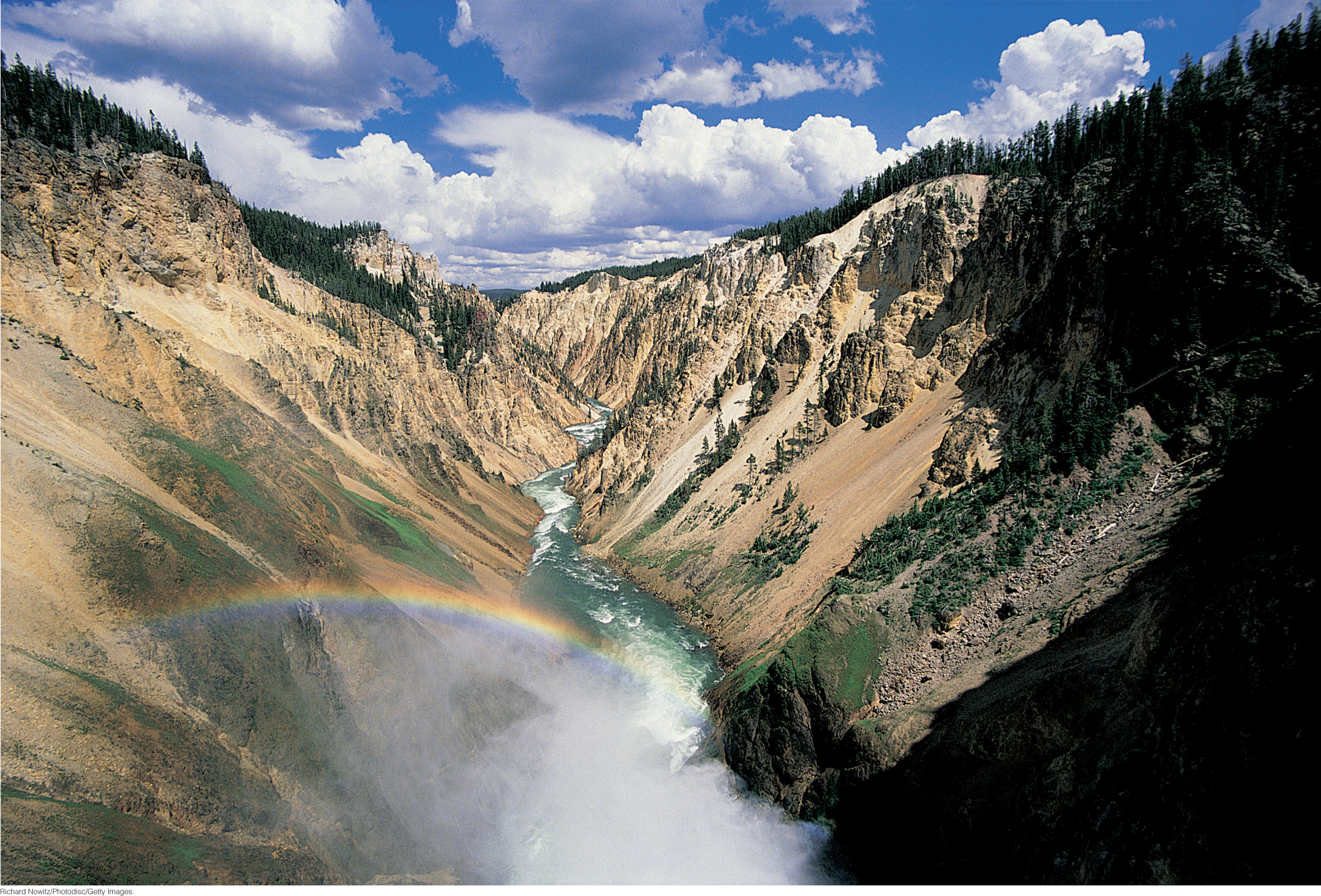312

VOLCANOES
 Volcanoes as Geosystems
Volcanoes as Geosystems Lavas and Other Volcanic Deposits
Lavas and Other Volcanic Deposits Eruptive Styles and Landforms
Eruptive Styles and Landforms Interactions of Volcanoes with Other Geosystems
Interactions of Volcanoes with Other Geosystems The Global Pattern of Volcanism
The Global Pattern of Volcanism Volcanism and Human Affairs
Volcanism and Human Affairs
313
THE NORTHWESTERN CORNER OF WYOMING is a geologic wonderland of geysers, hot springs, and steam vents—the visible signs of a vast active volcano that stretches across the wilderness of Yellowstone National Park. Every day, this volcano expels more energy in the form of heat than is consumed as electric power in the three surrounding states of Wyoming, Idaho, and Montana combined. This energy is not released steadily; some of it builds up in hot magma chambers until the volcano blows its top. A cataclysmic eruption of the Yellowstone volcano 630,000 years ago ejected 1000 km3 of rock into the air, covering regions as far away as Texas and California with a layer of volcanic ash.
The geologic record shows that volcanic explosions nearly this big, or even bigger, have occurred in the western United States at least six times during the last 2 million years, so we can be fairly certain that such an eruption will happen again. We can only imagine what it might do to human civilization. Hot ash would snuff out all life within 100 km or more, and cooler but choking ash would blanket the ground more than 1000 km away. Ash thrown high into the stratosphere would dim the Sun for several years, dropping temperatures and plunging the Northern Hemisphere into an extended volcanic winter.
The hazards volcanoes pose to human society, as well as the mineral resources and energy they provide, are certainly good enough reasons to study them. In addition, volcanoes are fascinating because they are windows through which we can look into Earth’s deep interior to understand the igneous and plate tectonic processes that have generated its oceanic and continental crust.
In this chapter, we will examine how magma rises through Earth’s crust, emerges onto its surface as lava, and cools into solid volcanic rock. We will see how plate tectonic processes and mantle convection explain volcanism at plate boundaries and at “hot spots” within plates. We will see how volcanoes interact with other components of the Earth system, particularly the hydrosphere and the atmosphere. Finally, we will consider their destructive power as well as the potential benefits they can provide for human society.
314